Hydrogen peroxide is a versatile and powerful cleaning agent that is often overlooked in favor of more conventional household products. Its non-toxic nature makes it an excellent option for those who value safety and eco-friendliness while maintaining a clean home. Known for its ability to remove tough stains, kill harmful bacteria, and deodorize surfaces, hydrogen peroxide is especially suited for tackling the unique challenges of kitchen cleaning.
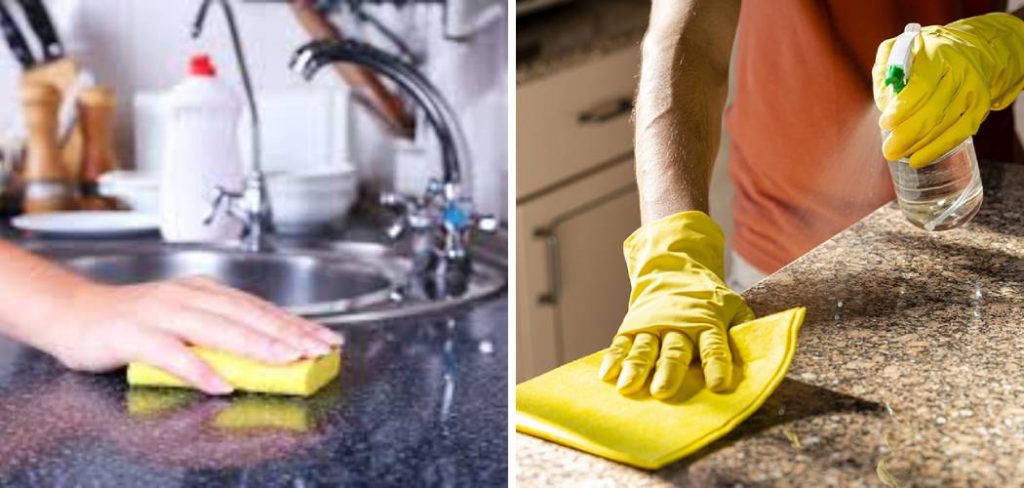
The benefits of using hydrogen peroxide in the kitchen are plentiful. It is safe for use on food-contact surfaces, ensuring harmful residues won’t linger around food preparation areas. Furthermore, it is effective in combating mold, germs, and grease build-up—all common foes in the kitchen—without relying on harsh chemical alternatives.
This article provides a comprehensive step-by-step guide on how to clean countertops and kitchens with hydrogen peroxide safely and effectively, allowing you to maintain a sanitary and pleasant cooking environment effortlessly.
Why Use Hydrogen Peroxide for Cleaning?
Hydrogen peroxide is a versatile and powerful cleaning agent due to its numerous benefits, making it a preferred choice for kitchen sanitation. Its unique properties ensure a clean environment and contribute to safety and sustainability.
Antibacterial and Antiviral Properties
Hydrogen peroxide is exceptionally effective at killing bacteria, viruses, and fungi, helping to maintain a hygienic kitchen space. Its ability to combat harmful pathogens ensures that food preparation areas remain safe and sanitary, reducing the risk of foodborne illnesses.
Non-Toxic and Eco-Friendly
Hydrogen peroxide is a safer, non-toxic alternative to conventional chemical cleaners like bleach. After use, it breaks down into water and oxygen, leaving no harmful residues behind. This makes it an eco-friendly option that aligns with the priorities of health-conscious and environmentally aware households.
Effective Stain Removal
Hydrogen peroxide is known for its powerful stain-fighting capabilities. It can effortlessly remove stubborn stains such as coffee, wine, and dried-on food residue, leaving surfaces looking spotless and rejuvenated without abrasive scrubbing.
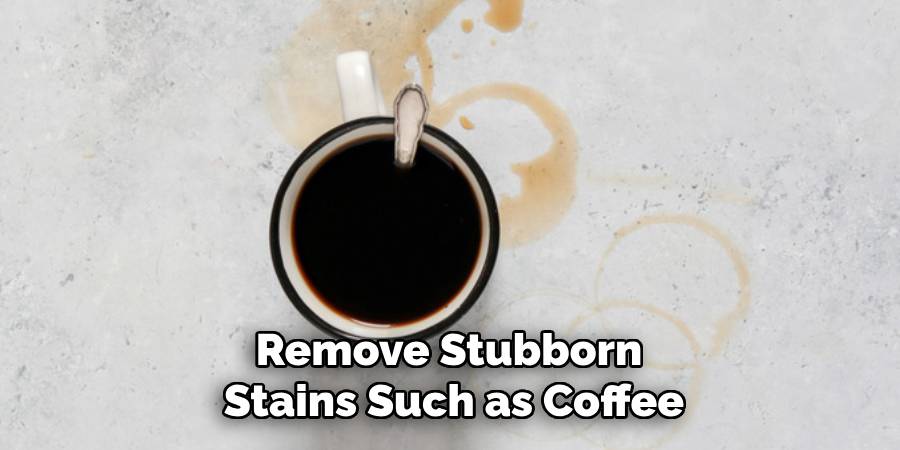
Deodorizing Power
Ridding the kitchen of unpleasant odors is another key advantage of hydrogen peroxide. It neutralizes odors caused by food spills and bacteria buildup, ensuring your kitchen always smells fresh and inviting.
Precautions When Using Hydrogen Peroxide
When utilizing hydrogen peroxide for cleaning, it is crucial to follow certain precautions to ensure safety and effectiveness.
Proper Concentration
Always use a 3% hydrogen peroxide solution for general cleaning purposes. Higher concentrations can be more potent but may risk causing damage to surfaces or materials. Dilute concentrations as necessary to avoid unintended harm.
Surface Compatibility
Hydrogen peroxide is suitable for most kitchen countertops and surfaces. However, it may discolor or damage porous materials like marble, granite, or certain types of natural stone. Before full use, test it on an inconspicuous area to confirm compatibility.
Storage and Handling
Store hydrogen peroxide in a dark, opaque bottle to maintain its potency. Exposure to light or high temperatures can degrade its effectiveness over time. Keep it tightly sealed and stored in a cool, dark place when not in use.
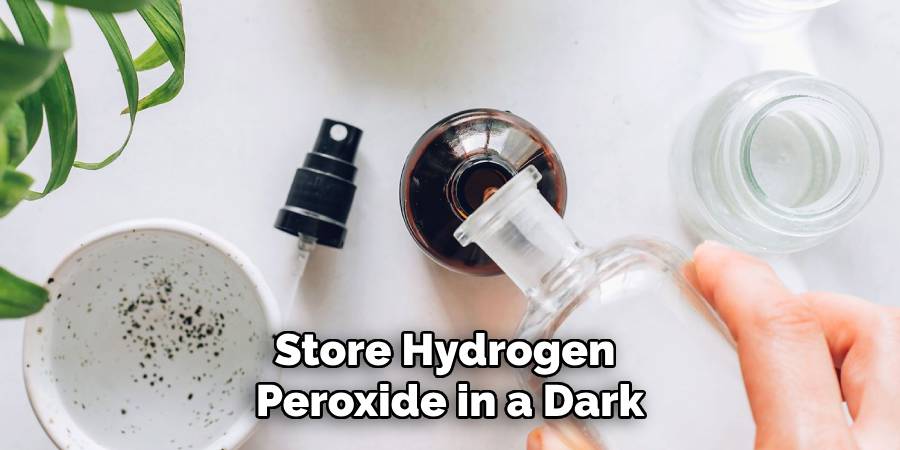
Avoid Mixing with Other Cleaners
Never mix hydrogen peroxide with other cleaning agents like vinegar or ammonia. This can cause harmful chemical reactions, possibly producing toxic gases. Always use it on its own to ensure safety and achieve the best cleaning results.
How to Clean Countertops and Kitchens with Hydrogen Peroxide: Cleaning Process
Step 1: Preparing the Cleaning Solution
Hydrogen peroxide can be used in its original concentration for tough stains and disinfecting or diluted with water in a 1:1 ratio for daily cleaning. Pour equal parts hydrogen peroxide and water into a spray bottle to prepare the solution. If you are diluting, gently shake to mix the solution well before use.
Step 2: Applying to Countertops
Begin by clearing the countertop of any debris or items for easier cleaning. Spray the hydrogen peroxide solution directly onto the countertop surface, ensuring even coverage. Alternatively, you can dampen a clean cloth with the solution and apply it to the surface. For effective disinfection, allow the solution to sit on the surface for 5-10 minutes to break down dirt and germs.
Step 3: Wiping and Drying
After the solution has been applied and left for the recommended time, use a microfiber cloth or paper towel to wipe the surface thoroughly. This will remove any residues and lingering contaminants. To finish, use a dry microfiber cloth to buff the countertop for a streak-free shine, leaving your surfaces clean and polished. Repeat the process regularly to maintain a hygienic kitchen environment.
Removing Stains and Grease with Hydrogen Peroxide
Hydrogen peroxide is a powerful disinfectant and highly effective at tackling tough stains and grease in the kitchen. Utilizing its natural bubbling action can make cleaning easier and more efficient.
Tackling Tough Stains
For stubborn stains on countertops or other surfaces, apply hydrogen peroxide directly to the stained area without diluting it. Allow the solution to sit and bubble for a few minutes. This bubbling action works to loosen stains and break them down. Afterward, use a scrub brush or cloth to scrub the area until the stain is removed gently. Rinse thoroughly with water to remove any residue and dry the surface with a clean cloth.
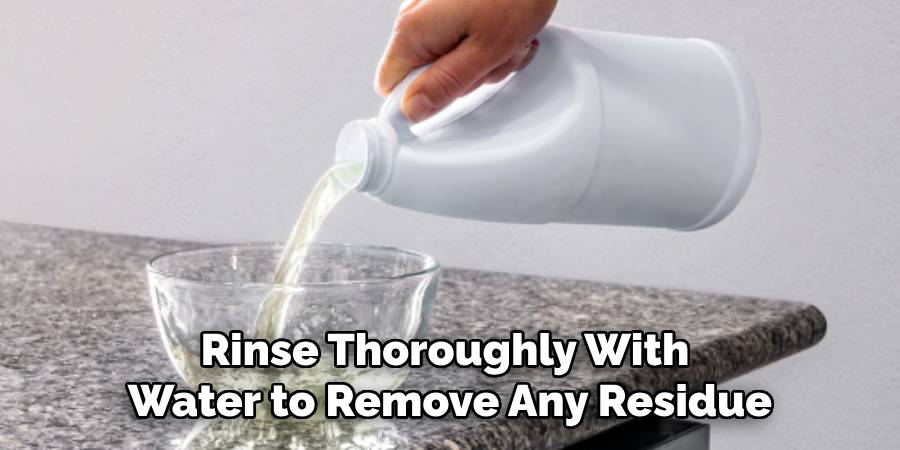
Cutting Through Grease
To effectively dissolve grease built up on stovetops, counters, or other greasy areas, mix hydrogen peroxide with dish soap in a 1:1 ratio. The combination of these two cleaning agents creates a powerful grease-cutting solution. Apply the mixture directly to the greasy surface using a sponge or cloth and scrub in circular motions. Rinse the area with warm water and wipe clean with a microfiber cloth to achieve a spotless finish. Regular use of this method will help maintain a grease-free and sparkling kitchen.
Alternative Uses for Hydrogen Peroxide in Kitchen Cleaning
Hydrogen peroxide offers several alternative uses in maintaining cleanliness and hygiene in the kitchen. Its versatile properties make it an essential addition to any cleaning routine.
Disinfecting Dish Sponges and Cloths
Dish sponges and cloths can harbor bacteria over time, leading to unpleasant odors and potential cross-contamination. To disinfect them, soak the sponges or cloths in hydrogen peroxide for about 15 minutes. This process kills bacteria and leaves them fresh and ready for reuse. Rinse thoroughly and allow them to dry completely before using them again.
Cleaning Tile Grout and Backsplashes
Grout lines and backsplashes can accumulate dirt, grease, and stains, diminishing the kitchen’s overall appearance. To brighten and clean these areas, apply hydrogen peroxide directly to the grout and use a scrub brush to remove embedded dirt gently. The powerful cleaning action helps to restore the original look of grout lines, leaving your tiles looking clean and polished.
Sanitizing Food Storage Containers
Lingering odors and stains in food storage containers can be difficult to eliminate. Hydrogen peroxide provides an effective solution by neutralizing odors and removing stains. Fill the containers with hydrogen peroxide or soak them in the solution for 15-20 minutes. Rinse thoroughly with water, and the containers will be fresh, clean, and ready for use.
Frequently Asked Questions (FAQs)
1. Can I Use Hydrogen Peroxide on All Kitchen Surfaces?
Hydrogen peroxide is safe for most surfaces, such as quartz and laminate countertops. However, it may discolor porous materials like marble, granite, or natural stone. Always test in an inconspicuous area before full use.
2. Is It Safe to Use Hydrogen Peroxide Around Food?
Yes, hydrogen peroxide breaks down into water and oxygen, leaving no harmful residues. However, rinse food preparation surfaces thoroughly after cleaning to ensure no traces remain.
3. What Should I Do if I Accidentally Mix Hydrogen Peroxide with Another Cleaner?
If hydrogen peroxide is mixed with other cleaners like vinegar or ammonia, it can create harmful chemical reactions. Leave the area immediately if this occurs and open windows for ventilation. Avoid combining cleaners in future use.
4. Can Hydrogen Peroxide Remove Strong Odors from My Kitchen?
Yes, hydrogen peroxide is effective at neutralizing odors. Use it to clean areas prone to strong smells, such as trash cans, cutting boards, or food storage containers.
5. How Often Should I Clean with Hydrogen Peroxide?
You can use hydrogen peroxide daily for light cleaning by diluting it with water. Full-strength hydrogen peroxide can be used as needed for tougher cleaning tasks or disinfection.
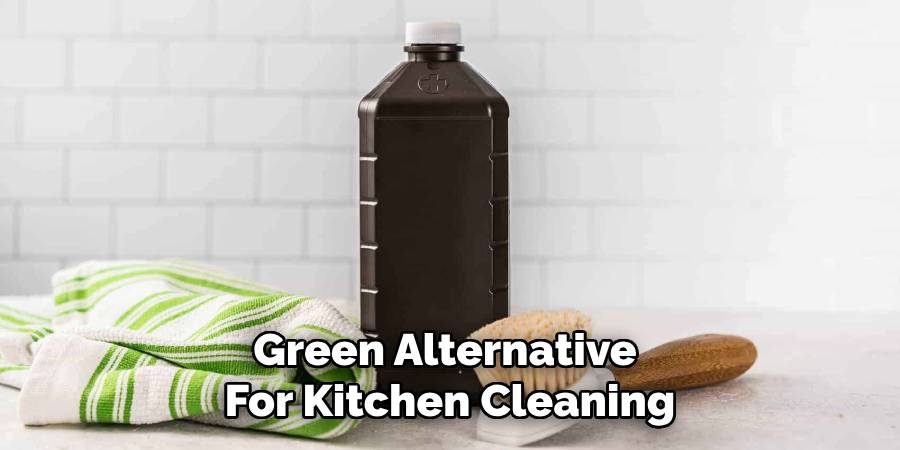
6. How Do I Safely Store Hydrogen Peroxide?
Store hydrogen peroxide in its original dark, opaque bottle in a cool and dry place away from sunlight and heat. This helps maintain its potency for longer use.
7. Can Hydrogen Peroxide Clean Utensils and Cutting Boards?
Yes, hydrogen peroxide is an excellent disinfectant for cutting boards and non-metal utensils. Apply it directly, allow it to sit for a few minutes, and then rinse thoroughly with water.
8. Is Hydrogen Peroxide Environmentally Friendly?
Hydrogen peroxide is considered eco-friendly because it breaks down into water and oxygen, leaving no harmful chemicals behind. It’s a great green alternative for kitchen cleaning.
Conclusion
Hydrogen peroxide is a versatile and effective solution for maintaining a clean and sanitary kitchen. From sanitizing sponges to brightening grout, it’s natural cleaning power eliminates bacteria, odors, and stains without resorting to harsh chemicals. When exploring how to clean countertops and kitchens with hydrogen peroxide, testing the solution on a small, inconspicuous area first to ensure compatibility with your surfaces.
By incorporating hydrogen peroxide into your regular cleaning routine, you can keep your kitchen fresh, sparkling, and safe for food preparation, all while using an eco-friendly and affordable alternative to traditional cleaners.
Professional Focus
Angela Ervin, a former interior designer turned blogger, specializes in kitchen design and renovations. Through her website, she blends her passion for cooking with design expertise, sharing practical and creative ideas. Known for balancing functionality and beauty, Angela’s insightful content has made her a trusted voice in home design and lifestyle.
About the Author
Angela Ervin, an experienced interior designer and blogger, combines her passion for kitchen renovations with storytelling. Living in Petersburg with her family, she enjoys cooking and testing her projects firsthand. Known for her humor and relatable style, Angela shares creative, functional design insights through her content, making her a trusted voice in home design.
Education History
University: Virginia Commonwealth University
Degree: Bachelor of Fine Arts (BFA) in Interior Design
- Angela’s education at VCU focused on mastering core interior design principles, including spatial planning, color theory, materials selection, and sustainable design practices.
- She gained hands-on experience through studio projects and collaborative design exercises, which honed her ability to create functional and aesthetically pleasing environments.
- Her coursework also emphasized problem-solving and practical applications of design, preparing her for real-world projects like her self-directed kitchen renovations.
- The program’s strong foundation in both technical skills and creative expression shaped Angela’s ability to seamlessly integrate form and function in her work.
